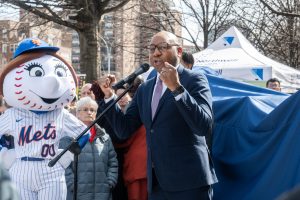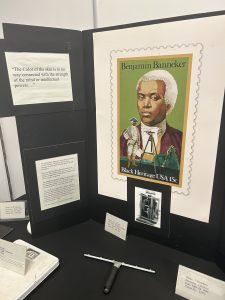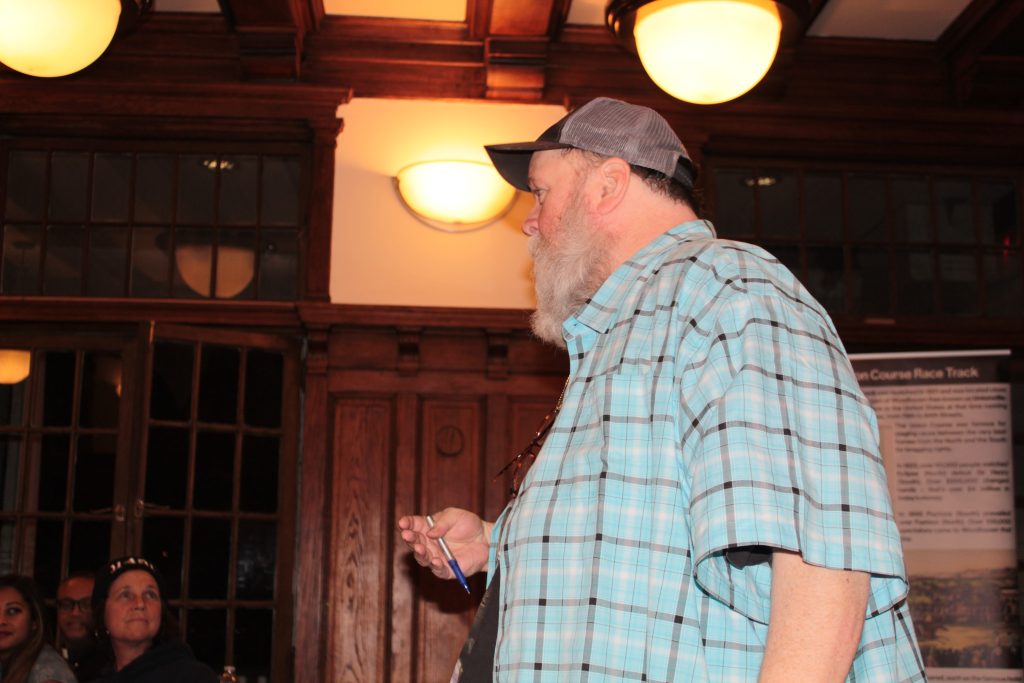Ronen Nahom Launches Mayoral Bid, Emphasizing Policing

Jack Delaney
JDelaney@Queensledger.com
Ronen Nahom, a longtime West Village resident with a varied career spanning entertainment, finance, and construction, has launched his bid to become New York City’s next mayor, espousing a vision for the city that includes beefing up policing, cracking down on protests, and repealing congestion pricing.
Nahom, XX, is helming a largely grassroots campaign to challenge Curtis Sliwa, a Republican mainstay, in the GOP’s mayoral primary in June.
What inspired the Manhattanite to run for mayor? “It’s years in the making,” said Nahom at a recent roundtable. “It’s a puzzle of a lot of things that I did in my life, that I went through.”
Nahom, who was born in Israel, moved to NYC in 1992 after fulfilling his mandatory military service. He only intended to visit briefly, but life had other plans: “After the army, I came to New York,” he recalled. “I was supposed to go travel, but my brother was here. So I came here [thinking I’d] work for a little bit, then go on the trip.” He laughed. “And I’m still here.”
In those first few years, Nahom drove a tow truck to pay the bills. After returning from a trip to Israel, he switched to driving limousines — and started to pursue his passion for acting. He worked as an extra, landing cameos in both “Sex and the City” and a skit for “Late Night with Conan O’Brien,” and joined the Screen Actors Guild. From there, he dipped his toes into the production side, forming his own outfit before shifting gears again: this time, as a home remodeler. Nahom also traded options with his brother on the side, until the dotcom bubble burst in the early aughts. Since then, he has focused on growing his construction business.

Though Nahom’s platform includes undoing DEI programs and addressing antisemitism, his campaign emphasizes policing and public safety as its top priority. “I’ve been doing martial arts since I was 14,” shared Nahom, and that practice informs his proposed solutions for the city’s problems.
At the heart of Nahom’s pitch to voters is the argument that the city must take a harsher approach to law enforcement and the criminal justice system. Specifically, he advocated — in a callback to former Mayor Rudolph Giuliani’s “broken windows” strategy — for levying heavy fines against fare evaders, while also restoring qualified immunity for police officers and seeking the maximum penalty for repeat offenders.
Furthermore, Nahom promised to crack down on protesters, which will likely be a hot-button issue in the race given the detainment last month of the Columbia graduate Mahmoud Khalil. As mayor, Nahom would “deploy specialized riot police to swiftly arrest and detain individuals participating in illegal demonstrations,” per his campaign site. “Peaceful assembly is a right but lawlessness and public disruption will be met with strict enforcement and zero tolerance. Our streets must remain open, safe, and functional for all law-abiding citizens.”
At the roundtable, Nahom expressed frustration with the slow pace of bureaucracy. While not a politician by trade, he pointed to his experience on the board of his housing cooperative in 2012 as evidence that he would be able to wrangle NYC’s many agencies: “I became loved by many, and hated by others,” he said. “I cleaned up everything. I made a lot of changes, and obviously other people don’t like it.”
In contrast to his own track record in that position, Nahom criticized current Mayor Eric Adams, characterizing him as ineffective. “How hard is it to go out there, take some action, and get some guts to do what it takes? If I was there in his shoes, I wouldn’t care who’s fighting what, and what the politics are like,” he said of Adams. “If I have to fight to the end and even lose the job, but try to actually get things done, I will.”
If needed, he continued, he would consider taking action against judges who he said were too lenient in their sentencing, to hold them to account: “How about every time these guys let these criminals out for the 150th time, you say, okay, this judge, put something out there and make them look bad — make them retract and change their mind.”

Nahom said one impetus for running was the experience of bringing his children on the subway, and having to tell them that it was not safe. He moved his family to Florida when the pandemic hit and mandates for both masks and vaccinations were floated, and said he was dismayed at what he perceived as the city’s decline since then.
Though his campaign faces long odds, having only raised approximately $20,000 to date, Nahom is confident that he will be able to unseat Sliwa. When Nahom started considering a run late last year, for example, he was initially cowed. “I started watching videos and debates. At first, it looked like this is a big thing — what am I thinking?” But after listening to the other candidates, he had an epiphany. “I was like, wait a minute, I can do a better job.”























































